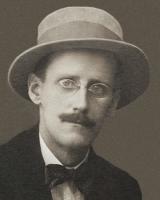The writing style of
James Joyce
James Joyce
1882-1941
Irish novelist and poet, known for his complex narratives and experimental use of language in works like 'Ulysses' and 'Finnegans Wake'.
James Joyce, a titan of 20th-century literature, is renowned for his intricate and experimental writing style, which has left an indelible mark on modernist literature. His approach to writing is characterized by a profound structural complexity and a unique use of language that often stretches the boundaries of literary convention.
Joyce’s narrative techniques are a departure from traditional storytelling. He frequently employs stream of consciousness, a method where the thoughts and feelings of a character are presented as they occur, allowing the reader to experience the internal monologue of the character in real time. This technique is particularly evident in his seminal work, “Ulysses,” where the thoughts of Leopold Bloom and other characters flow in an uninterrupted, chaotic cascade, mirroring the randomness of human thought.
Language in Joyce’s work is not merely a tool for communication but an artistic medium. He delights in playing with words through puns, neologisms, and multilingual references that challenge the reader’s perceptions and expectations. His use of language can be seen as a puzzle, with multiple meanings and allusions packed into single sentences. This complexity ensures that his texts remain open to a multitude of interpretations.
Structurally, Joyce’s works often eschew linear progression in favor of episodic narratives. “Ulysses” is structured around the framework of Homer’s “Odyssey,” with each chapter reflecting a different style and perspective, effectively creating a literary collage. This fragmentation adds to the richness of the text, allowing Joyce to explore various literary forms and styles within a single work.
Joyce’s writing is not for the faint-hearted. It demands active engagement and a willingness to embrace ambiguity and complexity. His style reflects a deep fascination with the capabilities of the novel as a form, pushing it to its limits and redefining what literature can be. In doing so, Joyce not only narrated stories but also vividly captured the tumultuous landscape of human consciousness, making his work a cornerstone of modernist literature.
